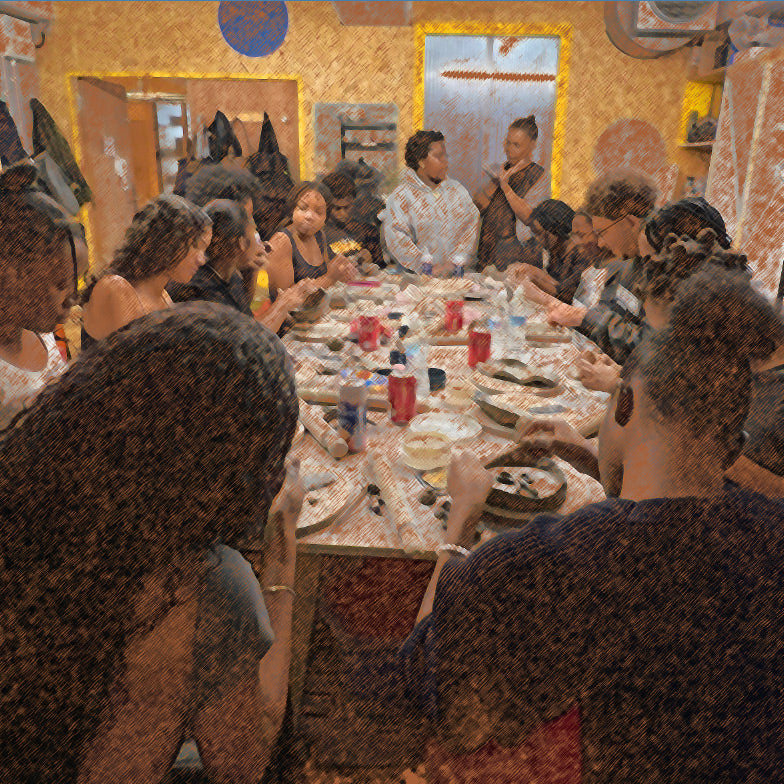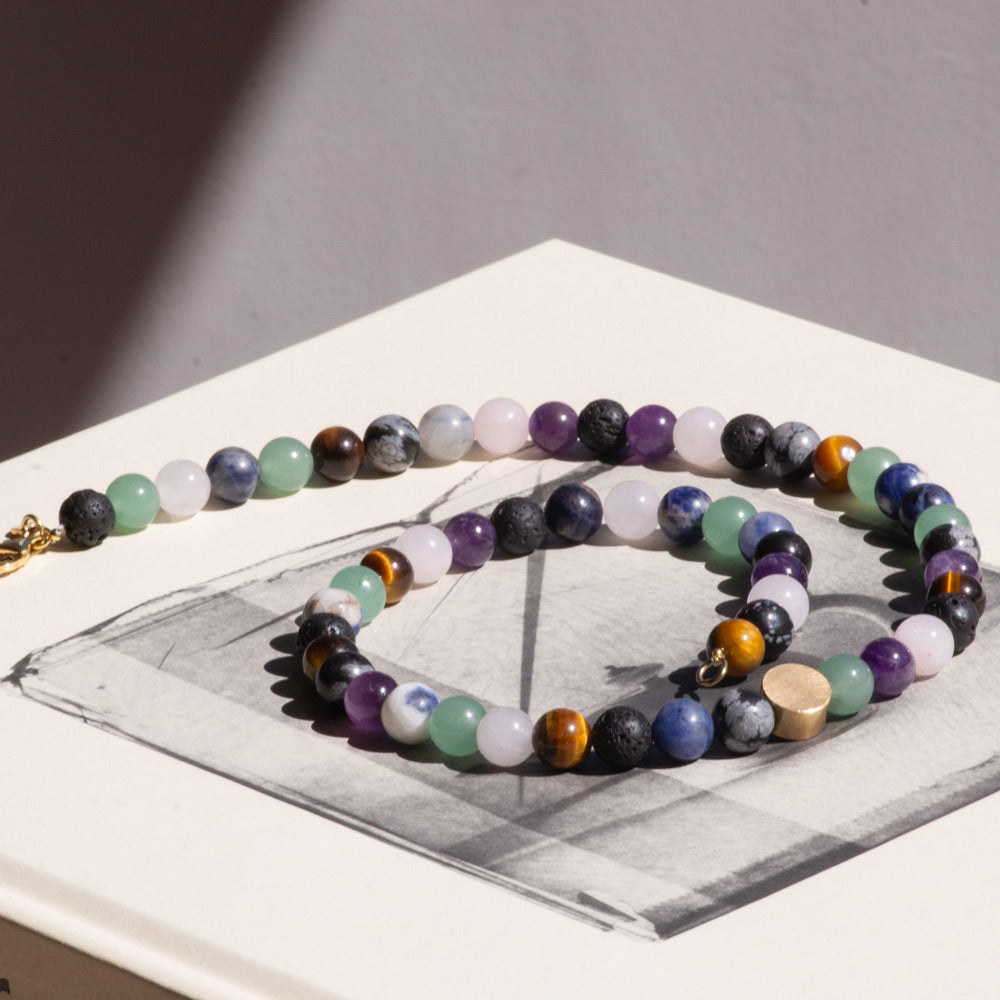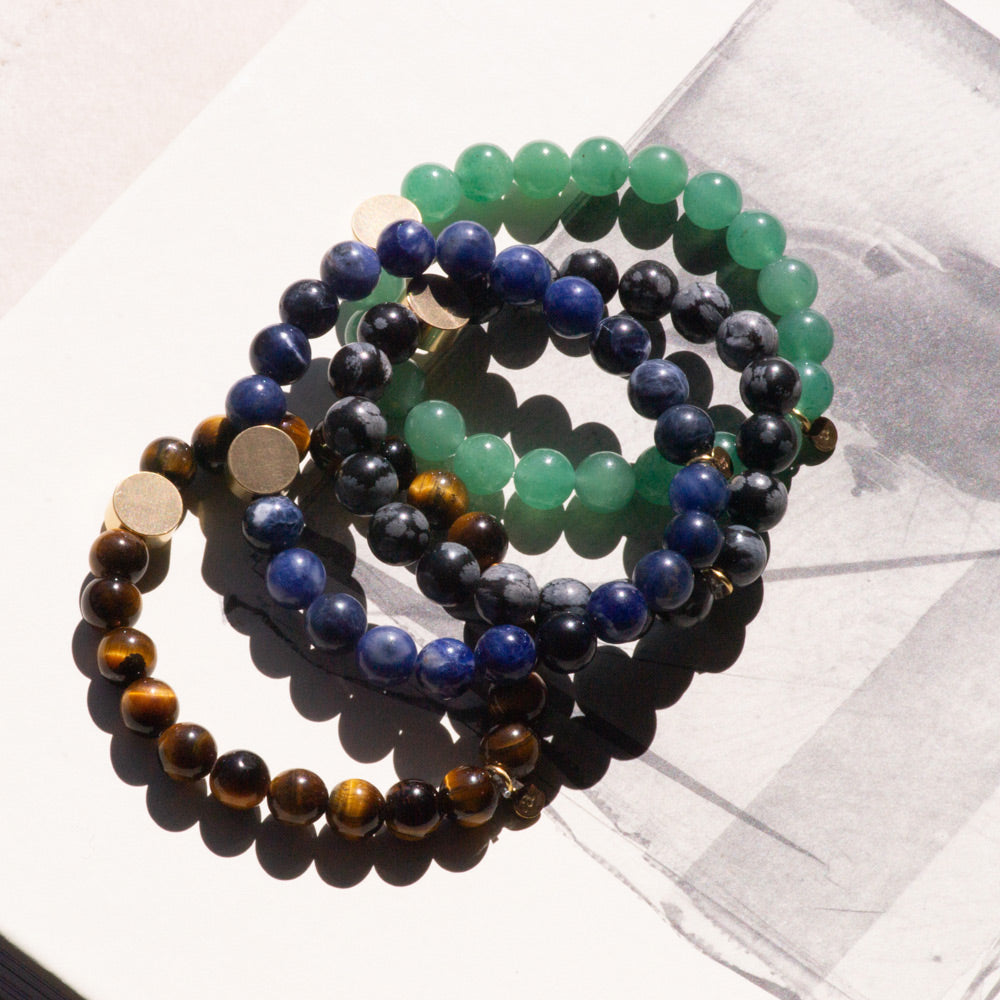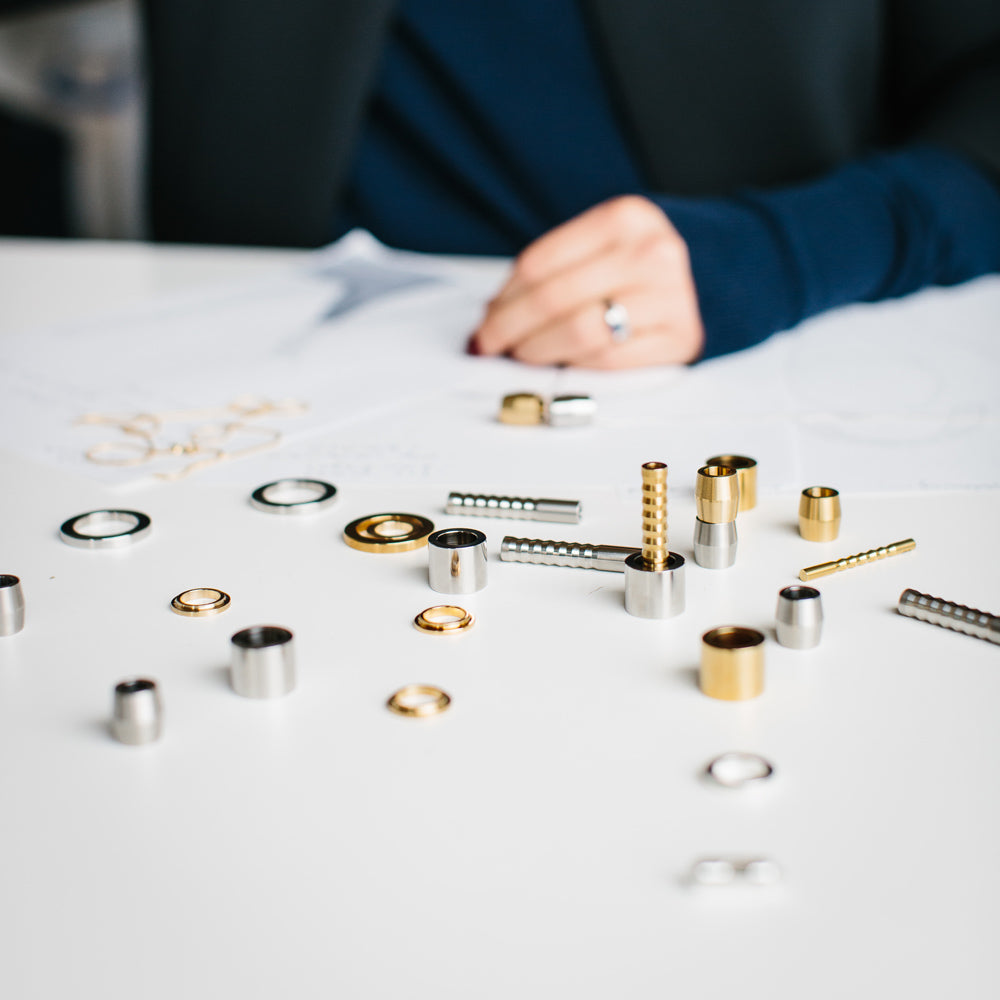Alice Made This X Transport for London to celebrate TfL's Year of Design
We are delighted to announce that we have been invited to design a selection of accessories by Transport for London as part of its Year of Design, celebrating iconic and exceptional transport design.
The Johnston collection is based on the materials used on the London transport system, past and present, and sees us working with some of TfL's existing factories and suppliers. Alice Made This has combined our signature aesthetic of clean, precise forms with the heritage and material innovation of London's transport system. The collection launches today at Designjunction as part of London Design Festival. 
The Johnston collection
AMT X TFL THE CUFFLINKS
The Johnston cufflinks are made in steel, one of the most abundant materials used throughout the TfL transport system. We were inspired by the graphic nature of the Roundel and so combined this famous symbol of London transport with a machined and polished finish, creating a refined pair of cufflinks. Experimenting with angles and perspective, when aligned, the head and the stem of the cufflinks reveal the subtle structure of the Roundel, celebrating the intricacies of London's infrastructure within the precision of a clean, timeless accessory.

AMT X TFL THE DESKTOP VALET
The Johnston desktop valet is formed from low carbon steel and finished with a vitreous enamel surface, used for all the signage on the London Underground. The valets are produced by A J Wells, the official supplier of Transport for London, and experts in vitreous enamel, a durable and smooth material. The enamel valet is paired with a clean cut leather mat, designed in London Transport white and navy blue to represent the colour of the Underground station names, mirroring the valet’s function as a destination for all manner of belongings in one place.
The Materials
For Alice Made This’s collaboration with Transport for London, two materials were selected to form the cufflinks and desktop valet – vitreous enamel and steel. Both these materials are used abundantly across the London Underground, steel primarily for construction and vitreous enamel for the iconic signage. A closer look at the properties of these materials reveals why they are used in construction and how they are suitable to make refined and precise accessories.
 Vitreous enamel first appeared in 1500 BC in Cyprus, and it was at its most important during the Middle Ages. From the 19th Century onwards, it has been applied to industrial materials and metal consumer objects. Enamelling is mostly used in jewellery and decorative art, for example the famous Faberge Eggs, but it also used on objects such as fridges and dishwashers. Enamel is made through a process called firing, where powdered glass is fused to a substrate. The powder melts, flows, and hardens to a smooth, durable vitreous coating on metal, glass or ceramic. Most modern industrial enamel is applied to steel. It is this firing process that makes enamel hard and scratch, fire and chemical resistant. Colour is obtained through the addition of various minerals and as enamel is glass rather than paint, it does not fade under ultraviolet light. For these reasons, vitreous enamel has long been used for all the signage on the London Underground, including the famous roundel. The fact that vitreous enamel is hard, easy to clean, and durable makes it the perfect material for a desktop valet, as it will withstand a lot of use without showing any signs of age.
Vitreous enamel first appeared in 1500 BC in Cyprus, and it was at its most important during the Middle Ages. From the 19th Century onwards, it has been applied to industrial materials and metal consumer objects. Enamelling is mostly used in jewellery and decorative art, for example the famous Faberge Eggs, but it also used on objects such as fridges and dishwashers. Enamel is made through a process called firing, where powdered glass is fused to a substrate. The powder melts, flows, and hardens to a smooth, durable vitreous coating on metal, glass or ceramic. Most modern industrial enamel is applied to steel. It is this firing process that makes enamel hard and scratch, fire and chemical resistant. Colour is obtained through the addition of various minerals and as enamel is glass rather than paint, it does not fade under ultraviolet light. For these reasons, vitreous enamel has long been used for all the signage on the London Underground, including the famous roundel. The fact that vitreous enamel is hard, easy to clean, and durable makes it the perfect material for a desktop valet, as it will withstand a lot of use without showing any signs of age.
The earliest known production of steel was in 1800 BC and by 650 BC, large quantities of steel were being produced in Sparta. Steel is an alloy of iron and other elements, primarily carbon, and is used widely in construction because of its high tensile strength. To stop corrosion, at least 11% chromium is added, creating stainless steel. However, carbon steel accounts for 90% of production. Steel is in fact one of the world’s most recycled materials, with a global rate of 60%. Due to steel’s durability, strength, toughness and weldability, it is used in the railway industry, for wheels, the body of passenger rail cars, and for the tracks. Steel is ideal for railway rails because it can withstand high stresses, and so the rails wear away very slowly to avoid cracking. The strength of steel and its high polish finish make it perfect for creating a pair of elegant and timeless cufflinks.










